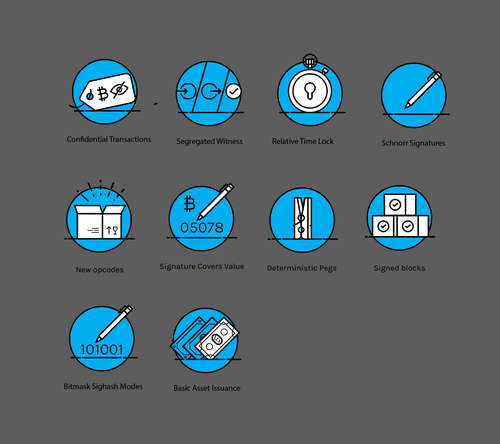Blockstream

Blockstream is a blockchain technology company co-founded by Adam Back, Erik Svensen, Pieter Wuille, and others, and led by Adam Back.[1] Blockstream is one of a number of institutions that provide funding for the development of Bitcoin, the predominant network client software.
Contents
The Victoria, British Columbia-based company is perhaps the most important and, at the same time, the least understood company in the Bitcoin community.
Managed by engineers, Blockstream to this point without making a serious effort to establish a dialogue with the outside world.[2] Recently, I spoke with its co-founder and, in combination, CEO Adam Back.[3] The purpose of this communication was to better understand the company itself, its mission and vision, to understand the differences between Blockstream and Bitcoin Core — a group engaged in the development of the Bitcoin protocol. In the ecosystem, disagreements have arisen in recent years;[4] users, exchanges, wallet providers and manners still have a long way to go to discover the world of Bitcoin to more people in the world.[5]
Company
The company is focused on developing bitcoin applications: specifically sidechains, as well as other applications. Blockstream has raised $76M to date from investors including Horizons Ventures and Mosaic Ventures.
Blockstream employs several prominent cryptographers, bitcoin developers, and industry veterans, including Adam Back (CEO, Blockstream), Pieter Wuille (Bitcoin Core developer), and Samson Mow (CSO).[6] Blockstream is one of the largest contributors of funding for Bitcoin.
Products
Liquid sidechain
On October 12, 2015, Blockstream announced the release of its Liquid sidechain which could allow for the transfer of assets between the sidechain and the main blockchain. Blockstream claims that Liquid reduces the delays and friction involved in a normal transfer of bitcoin. Blockstream asserts participating exchanges–including Bitfinex, and OKCoin[7]–can make near instant exchanges between their accounts and orderbooks.[8] The source code for sidechains has been released on an open source basis.
Blockstream Satellite
In 2017 Blockstream announced a plan to offer one way satellite broadcasting of the full bitcoin blockchain. The network as of 2017 is only a one way network and the user still needs an internet connection to send transaction.[9] The company plans to earn fees for value added services on the network, such as creating an API to allow companies to send additional data over its network.[9]
Initiatives
In addition to its corporate initiatives, Blockstream is also involved in a number of community steering and open source programs.
Bitcoin
Blockstream is one of the largest contributors of funding for Bitcoin protocol development.
Lightning Network
Blockstream hired , a well-known developer famous for his work on Linux kernel, to develop an implementation of the Bitcoin Lightning Network (LN). Russell has a four-part LN explanation on his blog. The Lightning network proposes to reduce transaction costs by allowing nodes to hold some transaction data in the cache before submitting it to the chain.
In May 2016, Blockchain.info announced Thunder, which claims to be an implementation of Lightning.
In May 2017, Segregated Witness activated on Litecoin, enabling the Lightning Network to be used.[10] In May 2017 Christian Decker of Blockstream sent the first microtransaction using lightning on Litecoin.
A brief abstract of the technology:
- The basis of payments are balance sheets, which are transactions with a multi-signature (from 2 parties).
- The transaction becomes valid when both parties sign it.
- Previous transactions are frozen for a few blocks to the new is no deception: already signed the old translations.
- For this safeguard to meet the particular transaction: it is given a reward and the network can track, are not held if the old balance table.
- All these transfers are carried out without incorporating the transaction in the blockchain of bitcoin.
- The acceleration of transactions goes through the search for bypass payment channels: there is a connection between the wallets (the Commission can only go to them and should cost much less). Those are the real mechanism that allows you to achieve almost zero transaction cost.
Elements Project
Blockstream released an open source codebase and testing environment for its sidechains product to the public under an open-source license. The Elements Project is a community effort to create and test new extensions to the Bitcoin protocol, whose early contributions include Confidential Transactions by Gregory Maxwell, and Segregated Witness by Pieter Wuille.

The Elements Corel are now:
- Asset Issuance (release of new coins)
- Confidential Transactions (Confidential transactions)
- Segregated Witness (reducing the space for transactions in the block 4 times)
- Relative Lock Time (a transaction with a time lock)
- Schnorr Signature Validation (a new way to build signatures for transactions)
- NewOpcodes (new scripts)
- The Signature Covers the Value (simplification transaction check)
- Deterministic Pegs (interaction between blockchain)
- Signed Blocks (signed blocks)
Confidential Assets
In April 2017, Blockstream released a paper on Confidential Assets, an extension of Confidential Transactions (which is itself derived from an Adam Back proposal for homomorphic values applied to Bitcoin [11]).
Among other contributions:
We begin by describing an efficient rangeproof for Pedersen commitments over the interval [0, mn − 1], which has total size proportional to 1 + nm, using a variant of a folklore bit-decomposition based rangeproof, in which numbers are expressed in base m and each digit is proven to lie in [0, m − 1] using a ring signature.
The rangeproofs are implemented in ElementsProject/secp256k1-zkp.
Satellites
Blockstream has announced the launch of bitcoin leased satellites that allow you to connect to the network in read-only mode without requiring Internet connection. This old idea was popular back in 2013, when someone showed how to connect to a local radio station and maintain a bitcoin site even without the Internet. If you have “a portable generator, satellite dish, Wi-Fi hotspot, a laptop with a full node, and a bit of money to send 250 bytes,”says Adam Beck, CEO of Blockstream,” you can use bitcoin anywhere with zero infrastructure.”
User in countries with bad Internet connection joins the network through products from Blockstream, then to pay fees for a transaction of this company. Who can be interested-people from remote places, where the infrastructure-a rare sight. This market is small, as smartphones with the Internet everywhere. Most likely, this is not the main goal of the company.
Satellite communications itself is a fundamental product for Blockstream. “Currently, the system is designed to provide 64 kbit/s. This provides sufficient capacity to reliably maintain sync with the network with a modest delay.”
Confusion with Blockstream
While the positive impact of many people in the company on Bitcoin is obvious, some blame the company itself for the insufficiently experimental approach to Bitcoin development, for the lack of rapid progress at the protocol level over the past few years.
Bitcoin Core is in no hurry to take risks when it comes to making changes to the Bitcoin code. In particular, Core does not support increasing the size of the unit as quickly as some would like. Some in the community are afraid that very soon, network bandwidth will become a bottleneck impeding the growth of user acceptance, which has even led to the emergence of proposals of alternative customers and development teams (for example, Bitcoin Unlimited, so hotly supported by Roger Vert).
Much of this sentiment stems from a misinterpretation of Bitcoin’s governance structure. Bitcoin has been described as democratic, but in reality it is not a democratic structure where representatives of government are elected, receiving the right to make decisions. Instead, Bitcoin is a user-controlled system where the code is associated with all network participants (developers, miners, users, exchanges). No group is in a position to make substantive changes to the protocol. In fact, this requires an absolute majority of votes. This can be seen as both a gift and a curse: it makes bitcoin one of the most invincible savings tools that have ever existed, but the same trait makes it difficult to make changes at the Protocol level.
Despite the fundamental device of Bitcoin, it is Blockstream that has the role of scapegoat: dissatisfaction with slow progress has spilled out on this company. At the same time, Blockstream as a company has little to do with Bitcoin Core: the company’s staff includes 20 engineers and only 1 member of the Core team, working full-time (Peter Wuille). Several other team members Blockstream involved in developing Core only from time to time, despite the fact that in 2016 on it was 517 participants that contributed to the development of Bitcoin. Blockstream is very much focused on developments over the Bitcoin Protocol, rather than on changing the protocol itself.
External links
See Also on BitcoinWiki
References
- ↑ Blockstream official about page
- ↑ [Need reference]
- ↑ [Need reference]
- ↑ [Need reference]
- ↑ [Need reference]
- ↑ Samson Mow Plans to “Make Bitcoin Great Again” as Blockstream’s New Chief Strategy Officer
- ↑ New Crypto Consortium Seeks to Alleviate Liquidity Problems
- ↑ Blockstream to Launch First Sidechain for Bitcoin Exchanges
- ↑ 9.09.1 Blockstream Is Using Satellites to Beam Bitcoin Down to Earth.
- ↑ https://twitter.com/Blockstream/status/862420329888595969
- ↑ https://github.com/ignopeverell/grin/blob/26ce1d27d727475a34bccc70f053b23c5e452447/doc/intro.md